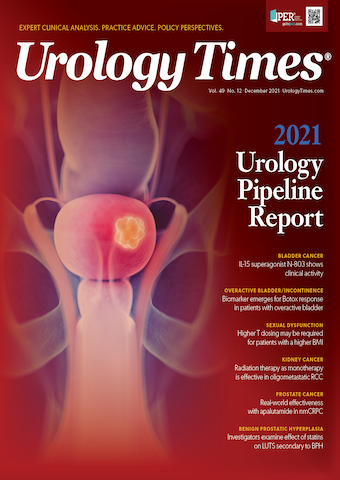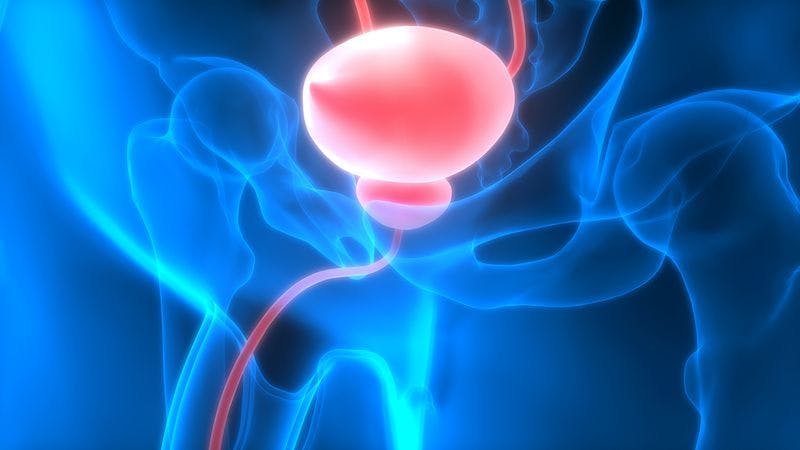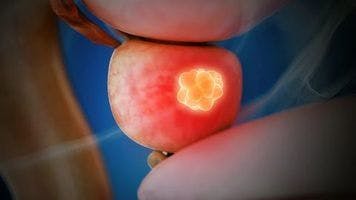Publication
Article
Urology Times Journal
Biomarker emerges for Botox response in patients with OAB
Author(s):
Urinary ATP levels have emerged as a biomarker of response to treatment with onabotulinumtoxinA (Botox; BTX-A) in patients with overactive bladder (OAB), according to findings from a prospective pilot study presented during the 2021 AUA Annual Meeting.1
Specifically, a decrease in urinary ATP levels following BTX-A injections corresponds to clinical improvements in OAB symptoms, Samantha Freeman, a 4th year medical student at the Albert Einstein College of Medicine, explained in her presentation.
“ATP is released by the urothelium and used as a key signaling molecule. It has been shown to be involved in the proper regulation of both bladder sensory and motor functions. Studies have found that ATP levels are higher in OAB patients,” explained Freeman. “Animals studies have been able to go a step further and show that BTX-A injections decrease stress-induced ATP release; however, little is known about the effect of these injection on human ATP levels.”
Accordingly, Freeman and her coinvestigators sought to demonstrate this effect in humans by assessing ATP levels and OAB-V8 questionnaire symptom scores to quantify and compare changes in voided urine ATP levels in women with OAB treated with BTX-A.
The study enrolled women aged ≥18 years. Patients were excluded from enrollment if they had neurogenic OAB, positive urine cultures, genitourinary cancer, or concomitant bladder stones, or if they were pregnant, bed-bound, unable to complete the surveys, or went into retention following injections.
The investigators collected urine samples prior to BTX-A injection and at post BTX-A injection visits. “Urine samples were frozen on dry ice until urine ATP levels could be quantified
using the luciferin–luciferase bioluminescence assay,” said Freeman. OAB-V8 questionnaires were used to assess symptom severity in patients at the time of urine collection
Overall, 24 women were recruited to the study. Six women had to be excluded from the study population, mostly because they had a positive urine culture. Of the eighteen remaining patients, there were 12 responders to the BTX-A treatment and 6 nonresponders.
The investigators collected a total of 42 urine samples from the 18 patients. Seventeen samples were collected prior to injection of therapy and 25 were collected after the treatment.
“All patients showed up to their first follow-up visit within 2 to three weeks of their BTX-A injection; however, second and third follow-up visit times were variable, with some patients not returning for follow-up visits and others coming at varying timepoints,” said Freeman.
The results of the analysis of urine ATP levels showed that patient responders at all follow-up timepoints had a negative percent change in their ATP level, “meaning ATP levels are lower after injection.” Patients who did not respond to treatment had a positive percent change, “meaning their ATP levels either remained high or even increased after treatment.”
Freeman noted that when comparing the 2 groups head to head, responders had significantly lower median ATP levels at the 2-week post BTX-A injecting follow-up compared with non-responders (P = .0268).
The researchers next used the OAB-V8 questionnaire scores to determine the correlation between changes in urine ATP levels and the degree to which patients responded symptomatically. They established response categories based on how much OAB-V8 scores improved: non-responder (<8 points); mild responder (8-16 points); moderate responder (17-24 points); marked responder (>24 points).
The results showed that there was a significant difference in percent ATP change among the categories, with greater improvement in OAB-V8 symptom scores correlating with a decrease in ATP level. The most significant difference occurred between the marked responders and the non-responders (P <.029).
“Patients who have improvements in their OAB symptoms following BTX-A injection also have a significant decreased in their urine ATP levels,” said Freeman.
In her summary remarks Freeman concluded, “The results suggests that BTX-Ais working on the urothelium and posing either a direct effect or indirect effect of BTX-A on mechanisms of urothelial ATP release and signaling. Therefore, quantification of urinary ATP may provide a valuable tool to assess treatment response and guide further management.
Reference
1. Freeman S, Tellechea L, Agalliu I, et al. Urinary ATP Levels: A Potential biomarker of overactive bladder treatment response following onabotulinum toxin-A injections. Presented at: 2021 American Urological Association Annual Meeting; September 10-13, 2021; virtual. Abstract PD06-10.

Newsletter
Stay current with the latest urology news and practice-changing insights — sign up now for the essential updates every urologist needs.






























